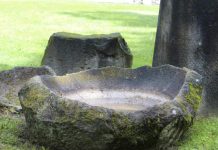Lizard Head is a very impressive mountain located in the San Juan mountain range near Telluride a vertical pillar, the result of heavy erosion leaving just the neck of an ancient volcano. Lizard Head Peak is 13,113 feet and stands spire-like on the eastern side of the Lizard Head Wilderness shadowed by 14,000-foot peaks, Mount Wilson and Wilson Peak.
The summit of Lizard Head Peak, a 400-foot-tall tower of rotten rock, has been voted one of Colorado’s most dangerous and difficult climbs. The United States Congress designated the Lizard Head Wilderness in 1980, actually has a total of 41,459 acres. All of this wilderness is located in Colorado and is managed by the Forest Service.
However, Lizard Head Wilderness is a land of rugged mountain splendor, with beautiful cirque lakes, swift mountain streams that often plunge over dramatic waterfalls, and a spruce-fir forest opened by expanses of alpine vegetation. Moreover splendid golden aspen blanket the lower slopes in vast unbroken reaches every fall.
Further, the Lizard Head trail traversing Black Face Mountain’s broad, panoramic ridge is not the shortest route to the base of the Lizard Head peak but it is surely the most picturesque. Hence, the rock spire of Lizard Head looks like an old eroded volcanic plug but it is in fact composed of extrusive volcanic ash flows of Oligocene age resting on older sedimentary rocks of Eocene age.
Lizard Head is one of the most difficult summits in Colorado to climb the first ascent makes a memorable and harrowing tale of a more rotten mass of rock inconceivable by Albert Ellingwood. The first known people to reach the top of the pinnacle were Albert Ellingwood and Barton Hoag who pioneered a route up the west face in 1920.
In spite of the stern and daunting objective hazards, the first ascent team completed the climb and descent safely in a feat of mountaineering skill. The peak appearance changed significantly due to a landslide in 1911. You may find several photographs of the peak before the landslide, which show the substantial change has done.
Therefore, the earlier photo shows a taller squared-off peak that would be more suggestive of a lizard’s head. Therefore, it is extremely hard to leave an indelible impression of Lizard Head peak. On average only 20 to 30 people scale the peak each year, which you can estimate the treacherous climb of Lizard Head peak.
No doubt it looks very impressive but to climb him is a daunting task with special climbing capabilities. Hence be remembered, that climbing is an inherently dangerous activity and you should always climb within your ability after carefully judging the safety of the route.











